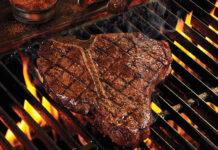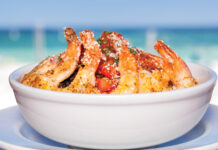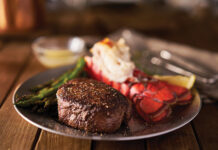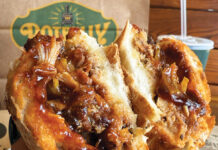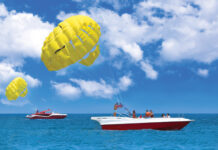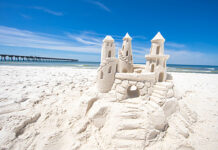 By Julie McConnell, UF/IFAS Extension
By Julie McConnell, UF/IFAS Extension
Happy New Year, Readers! As I’m writing this we are anxiously awaiting extremely cold temperatures and by now I expect you have seen some damage to your landscape plants and are wondering what to do about it. The short answer is patience, but I have a few tips for you as your plants attempt to recover from the shocking cold end of 2022.
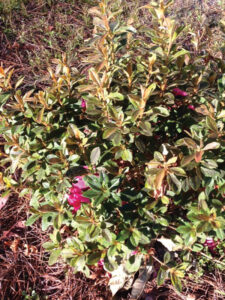 Woody shrubs and trees
Woody shrubs and trees
Leave cold-damaged stems and branches intact until after the danger of additional cold weather has passed. Even damaged leaves can provide some insulation and pruning triggers bud break if temperatures warm up. New growth is very susceptible to cold damage, so you don’t want to encourage this too early. In the spring check damaged branches for signs of life. Flexibility in the wood and green inner bark (scrape lightly with a fingernail to check) indicates the potential to resprout and recover.
Herbaceous (non-woody) plants
Plants without woody stems such as begonias, pentas, and million-bells may collapse and turn mushy when exposed to freezing temperatures. This tissue is dead; however, the crown of the plant may still be alive but you won’t know until spring. To prevent rot issues caused by bacteria or fungi remove the squishy plant tissue and dispose of it.
Lawns
It can be difficult to determine if lawns have cold damage immediately after a hard freeze since they may already be brown from cold dormancy. A few indicators that it is cold damage rather than dormancy are blades that appear wilted, a different shade of brown or bleached out white color, and a foul odor. Since there is no cure or fix, the best strategy is to wait and see which portions of the lawn green up in the spring. Do not fertilize until all danger of cold weather has passed (typically mid-April in Bay County).
In general, the standard care is to offer water if needed, remove any tissue that may harbor rot-causing organisms, and wait to see how resilient your plants are. Avoid fertilization as the process of converting fertilizer to a usable form expends energy the plants need to recover. Winter/early spring fertilization can also trigger vulnerable new growth and contribute to fungal disease in turfgrass.
If you need to replace plants, consider using selections that are cold hardy to 10°F to offer more low-temperature hardiness during uncharacteristically frigid winters. Other preventive measures include situating marginally hardy plants in sheltered locations out of winter winds.
Additional resources can be found below:
Freeze Damage Symptoms and Recovery for Citrus https://edis.ifas.ufl.edu/publication/HS1275
Recovering from Freeze Damage https://edis.ifas.ufl.edu/publication/CH004
Cold Damage on Palms https://edis.ifas.ufl.edu/publication/MG318
An Equal Opportunity Institution. UF/IFAS Extension, University of Florida, Institute of Food and Agricultural Sciences, Andra Johnson, Dean. Single copies of UF/IFAS Extension publications (excluding 4-H and youth publications) are available free to Florida residents from county UF/IFAS Extension offices.



